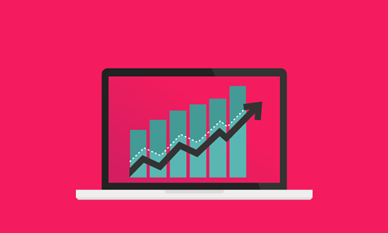Four misconceptions about the Vitality Programme dispelled
Published: 01/02/2022
There’s more than just rewards and incentives to the Vitality Programme – there’s a whole load of behavioural science behind it too, writes Greg Levine, Managing Director, Sales and Distribution, for Vitality.
We’ve all heard the phrase ‘perception is reality’. Once we have a mental impression of something, it will define how we see it. In our minds, it becomes true – even if perhaps it’s not.Take our health and wellbeing, for instance. People way too often over-estimate the quality of their health and how long they are likely to live. Often referred to as optimism bias, our view is not always truly reflective of our reality.
This is one of the main reasons why financial advisers face a challenge. Especially when it comes to convincing clients of their vulnerability to a financial shock due to serious illness, injury, or even death. The industry adage “it won’t happen to me” springs to mind.
On top of this, the world today is a difficult place to make good decisions when it comes to lifestyle choices. As humans, we’re bombarded by temptation and, as research shows1, we are far more likely to make a bad decision today for instant gratification than a positive one to benefit our future selves.
“While there are some examples of behavioural economics being used to encourage a healthier society – such as the sugar tax and smoking ban – we believe the protection and health insurance industry has a huge role to play in encouraging individuals to make positive lifestyle choices.”
Misconception #1: It’s the adviser’s responsibility to get a member to engage
Getting clients engaged in the Vitality Programme is not a one-way street – we believe it’s a partnership. We would always encourage advisers to explain its shared value benefits as a win-win for all, as well as play a part in guiding them towards Member Zone. However, once a plan has been placed with us, we take a number of steps to ensure a member gets the support they need. This includes welcome calls and emails, as well as anniversary statements and Vitality Rewards summaries that evidence their savings and benefits. We see a 25% increase2 in percentage of members registering on Member Zone following a welcome call - and 45% engage with the Vitality Programme within just 28 days of joining, our data shows3. This compares to the 8.5%, on average, who engage, at any time, with similar programmes in the market.Misconception #2: It’s too difficult for my client to move up through the statuses
Engaging with the programme has never been easier. Everyone starts on Bronze. All it takes is an Online Health Review, non-smoker declaration, a dental check-up and a health check for your client to get to Silver. This can be done in the space of a week. Not only will this unlock extra value through rewards and benefits, it’s good for them because they also understand their health better. To reach Gold, your client then only needs to complete 12,500 steps or a 30-minute workout twice a week throughout the course of a year4. By doing this four times a week, they’ll reach Platinum5. Again, enhancing the likelihood they will remain in good health. Not only that, we’re soon introducing Next Best Action into the Vitality Programme. This means we will reward clients with a status boost – even as far as Platinum – for making the most vital behavioural change that can benefit their health. Everyone wins.Misconception #3: My clients won’t engage, meaning their life insurance premium will go up
We know from our Life member data that clients who take out Optimiser are more likely to engage in the Vitality Programme. Because they have the ability to maintain their Platinum Rate through the Vitality Programme, it helps drive engagement. By getting access to lower premium costs upfront6, clients are more motivated to maintain it – or, I should say, reluctant to pay more. Behavioural scientists call this loss aversion. As a result, when Optimiser is selected, clients are twice as likely to take steps to improve their health7. In addition, clients receive value regardless of their status with an Optimiser plan – even on Bronze. It’s just that the higher their status, the better off they will be financially8.Misconception #4: The Vitality Programme only appeals to young, healthy people
Another common misconception among financial advisers is that Vitality is best suited to younger, fit and healthy clients. Although many advisers know this is not the case, our data proves it too. For a 65-year-old, the average annual saving from the Vitality Programme is £224. This compares to an average of £206 for a 25-year old with a plan. Older members also shown greater behavioural change from wearable technology. In fact, over 60s are 23% more physically active after selecting our Apple Watch benefit, when compared to our members under 30 - who are still an impressive 20% more active9.The times they are a-changin’
While many providers are now leading with a health and wellness message, this is generally not backed up by a systematic behaviour change programme like the Vitality Programme. When considering effectiveness, we ask three questions:1) Are members engaging?
2) Are members changing their behaviour?
3) Is there evidence of positive health and economic outcomes?
Ongoing personalisation of the Vitality Programme will help to dispel common misconceptions even further. That’s why we are convinced that the effectiveness of protection and health insurance offerings in the future will be not only be judged by the claims they pay out – but also by those they prevent. Using proven behavioural science and actual evidence to back it up.
Find out more below about our latest enhancements to the Vitality Programme and how we are encouraging your clients to take the ‘Next Best Action’ for their health and wellbeing.
The future of personalised health. Now.
Where to next?
-
Help your clients to keep their New Year's resolutions
As well as helping clients plan ahead financially, why not give your clients the tools they need to keep helpful habits locked in place for the long-term?
-
The future of Personalised Health. Now
We're bringing real personalisation and introducing new partners to the Vitality Programme in 2022.
-
Insights Hub
Our Insights Hub brings you our range of adviser content - from video series to articles & blogs.
1. The self over time, Current Opinion in Psychology, ScienceDirect, Professor Hal Hershfield
2. Vitality analysis, 2021
3. Based on comparison of Vitality Corporate members and Britain’s Healthiest Workplace responses.
4. Working out at 70% of your maximum heart rate
5. With at least one green zone
6. Term plans: up to 30% lower than our standard plan rate. WOL plans: up to 41% lower than our standard plan rate. Premium reduction depends on the client profile and product choices
7. Vitality analysis, 2020
8. Vitality analysis 2021
9. Vitality membership data comparing the number of active days per month before and after selecting the Apple Watch benefit


